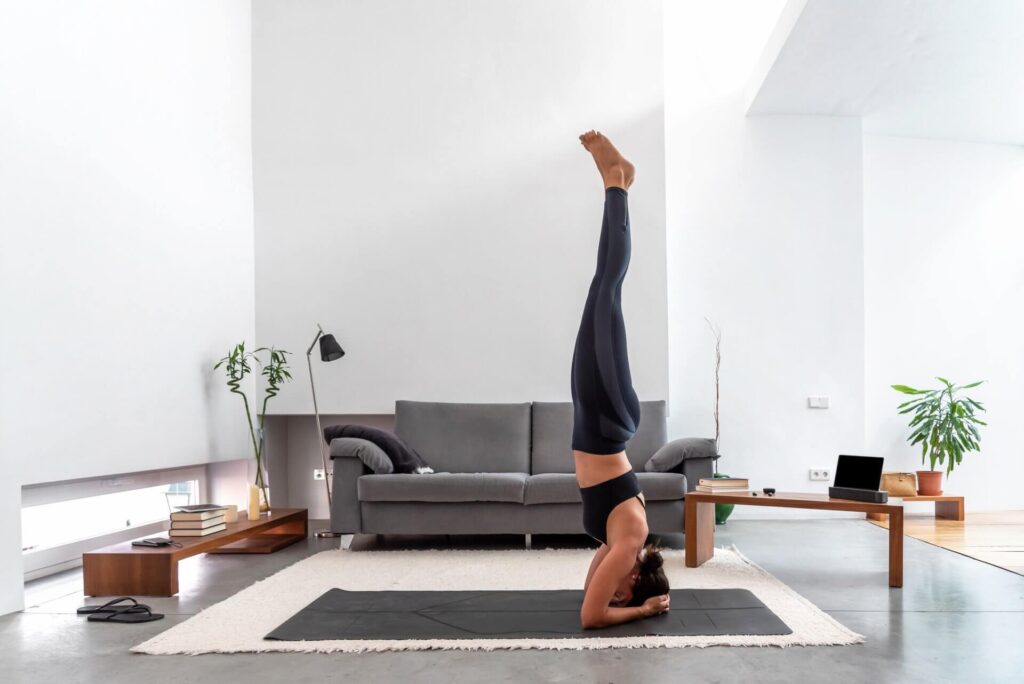“Defy Gravity and Elevate Your Practice with Sirsasana – Headstand Pose”
Welcome to our self-care sanctuary, where we explore the world of yoga. In this blog post, we’ll dive deep into the advanced Headstand Pose, known as Sirsasana in Sanskrit. This challenging asana offers a unique opportunity to defy gravity, physically and mentally.
Origin and Symbolism
Sirsasana, or Headstand Pose, has deep roots in ancient yogic traditions. The name “Sirsasana” is derived from the Sanskrit words “siras,” meaning “head,” and “asana,” meaning “pose.” This pose symbolizes the inversion of the body and the shift in perspective it brings, reflecting the courage and transformation we aim to cultivate in our practice.
Strengths and Benefits
Despite its advanced level, Headstand Pose offers a wide range of advantages for your physical and mental well-being:
- Core and Upper Body Strength: It builds exceptional core strength and engages the muscles of the upper body, particularly the shoulders, arms, and back.
- Improved Focus: The pose challenges your balance and concentration, fostering mental focus and mindfulness.
- Lymphatic System Activation: Being an inversion, Sirsasana can stimulate the lymphatic system, aiding in detoxification.
- Calmness and Stress Relief: It promotes a sense of calmness and stress relief when practiced mindfully.
- Self-Confidence: Successfully mastering Headstand can boost self-confidence and a sense of achievement.
How to Perform Headstand (Sirsasana)

Let’s explore the world of Sirsasana with these step-by-step instructions:
- Starting Position: Begin on your mat in a kneeling position. Interlace your fingers and place your forearms on the mat, creating a triangle with your hands.
- Head Placement: Place the crown of your head against the mat, so the back of your head is cradled by your interlaced fingers.
- Elbow Alignment: Ensure your elbows are shoulder-width apart and your forearms remain parallel.
- Lift Hips: Lift your hips upward, keeping your knees on the ground. Walk your feet toward your face as much as you comfortably can.
- Engage Core: Engage your core muscles as you prepare to lift your legs off the ground.
- Lift Legs: Slowly raise your legs off the ground, keeping them straight. Your body should become vertical.
- Balance and Alignment: Balance on your head and forearms, ensuring your body is in a straight line from head to heels.
- Gaze: Your gaze should be directed toward a point on the floor between your hands.
- Hold and Breathe: Stay in Sirsasana for 15-30 seconds or longer, maintaining steady breathing.
- Exit the Pose: To exit the pose, lower your legs with control and return to the starting position.
Difficulty Level and Duration
Sirsasana is an advanced-level pose, and it should be approached with caution. Beginners should seek proper instruction and supervision. The duration can vary based on your experience, but beginners may start with very short holds and gradually extend their time in the pose.
Variations and Modifications
Supported Headstand: Use a wall or a partner for support until you build confidence. Tripod Headstand: Place your hands on the ground, forming a triangle with your head for added stability.
Tips for a Deeper Practice
Use the Wall: Practicing near a wall provides added security as you work on balance. Avoid Sudden Movements: Make slow and controlled movements to prevent falls.
Preparation Poses
- Dolphin Pose (Ardha Pincha Mayurasana): Strengthen your shoulders and core in Dolphin Pose.
- Forearm Stand (Pincha Mayurasana): Familiarize yourself with balancing on your forearms.
Counter Poses
- Child’s Pose (Balasana): After Headstand, relax and release any tension in Child’s Pose.
- Corpse Pose (Savasana): Finish your practice with Savasana to rejuvenate and integrate your experience.
Final Thoughts
Headstand Pose, or Sirsasana, embodies the essence of defying gravity and shifting perspective. As you incorporate this advanced pose into your practice, may you discover the physical and mental strength it nurtures.
May Sirsasana serve as a reminder that, through courage and transformation, you can rise above challenges and discover new horizons. With each practice, may you defy gravity both on your mat and in your life, finding increased strength and a deeper sense of well-being on your self-care journey.


